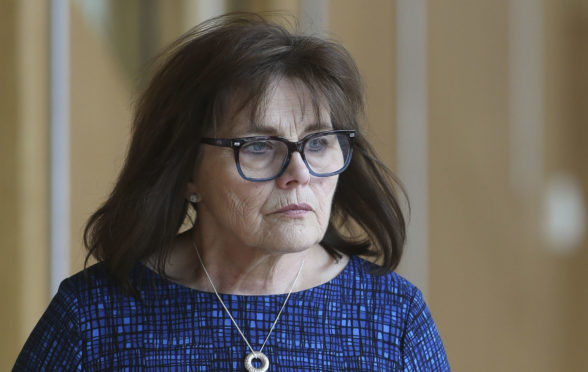
Visiting in Scotland’s care homes is set to resume from July 3, the Health Secretary has announced.
Jeane Freeman said that a “cautious” phased return would be implemented “where and when it is safe to do so”.
It would mean visiting will be permitted if care homes have had no cases of Covid-19, or have been free of cases for 28 days.
One nominated visitor per person will be allowed, and they would only be able to meet with residents outdoors, and would have to wear a face covering for the duration.
Physical distancing and hygiene measures would also be in place.
Ms Freeman said: “I know that these necessary restrictions that were placed on care homes and the pause on normal activities and routines have been both difficult and, at times, distressing for people living in care homes and for their loved ones and staff.
“The decision to restrict visitors was not taken lightly and was informed by scientific and clinical advice and taken to protect those living and working in care homes and visitors from the risk of infection.
“But significant progress has been made, and we have seen improvements in the number of care homes which have ongoing infections, to the extent that we can now see a cautious, phased return to visiting in care homes when and where it is clinically safe to do so.”
Yesterday’s National Records of Scotland weekly figures showed that the number of deaths in care homes involving Covid-19 has continued to fall, with 20 deaths in the last week.
In total, 47% of all Covid-19 deaths to date have been in care homes, 46% have been in hospitals and 7% at home.
Ms Freeman noted that it was “crucial” that any further opening up of visitation was done “incrementally”.
She said: “When the scientific and clinical advice is clear that it is safe to do so, then we can consider gradually opening up further visiting options.
“In all of this, our care homes will be supported by the local NHS health protection team.
“I know that this will be important and I hope welcome news for families and friends with loved ones in care homes. I know how long you’ve been waiting to see them.
“But I also know that you will understand our caution. When the evidence shows that it is the right time to move to the next stage of the plan, we will provide you with an update.”
Ms Freeman said that the Scottish Government was also working on a plan for a phased return to visiting for those in hospital and other healthcare settings.
Today saw five further cases added to the total number of positive tests for coronavirus in Scotland, taking the total so far to 18, 196.
Speaking at the Scottish Government’s virtual coronavirus briefing, the First Minister said it marked the second day in a row when new cases have been in single figures, the first time this has happened since March 11, pre-lockdown.
Two further deaths were also announced, taking the total by that measurement to 2,482.
There are 826 people in hospital with confirmed or suspected Covid-19, a drop of 54.
Of these patients, 18 were in intensive care, a fall of five.
Nicola Sturgeon said: “This is the second day in a row the number of new cases has been in single figures.
“To put that into context the last time that happened was March 11. So that is a sign of how far we have come and the progress we have made.”
The First Minister added that the R number – the average number of people each infectious person passes the virus on to – was still estimated to be between 0.6 and 0.8 in Scotland.
She went on to state the number of people who are believed to be infectious with Covid-19 was thought to have fallen from 2,900 to around 2,000.
“All of these figures demonstrate again the progress we are all collectively together making in the fight against Covid,” she added.

Enjoy the convenience of having The Sunday Post delivered as a digital ePaper straight to your smartphone, tablet or computer.
Subscribe for only £5.49 a month and enjoy all the benefits of the printed paper as a digital replica.
Subscribe